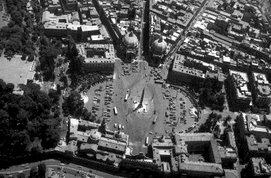I think this program was very intensive overall.
The discussion we had in the blog was very helpful as learning tools and material.
The way we had the course set up, I think the professors was very good about responding to everyone’s discussion postings in everyone’s blogs. It's good to have a professors that cares about every single student's answers and thoughts.
In the beginning of the week, there might be a little mishap as we all learning how to blogging, using blackboard, downloading, etc.. Overall, I thought the communication between teachers and students are pretty smooth throughout the semester.
It was fun and intensive courses. Each time I spent for each class really pushed me to think outside the box. Balancing between family, work and school could be challenging for each of us, but I think this is the beauty of this program, where we manage to hone our skill in managing time. I really enjoyed the format of this course because it I don't like to speak out in class, but this allowed me to give answers without speaking out loud. And it is on our own time.
I thought it was pretty creative the way that Chris has the course planned. Chris, you reverse the order on developing the building concept, where we have to create series of perspective drawings before we know where the wall is, and to create the model before we even know the floor plan looks like. This uniques and interesting concepts are valuable tools to enhance my skills.
For theory and history class, Herb really pushed hard on each of us about what we are here for, and why we are here. This helps me to think hard about my goals and carriers, because in order to be successful we have to have goal and purpose in our creative and unique profession.
For improvement, I would like BAC to offer a class that concentrate in preparation for ARE exams. I’m sure the majority of my classmates would agree with that.
In the future semester, I am hoping we can have breathing room the finals. This semester works fine, because of the snowstorm; Herb pushes the deadline 2 more extra days. Having the breathing room I really think this will help the individual to finalize and presented their work better.
Thorough the 5 semesters, I would like BAC to provide 1 small storage room for all us, where we can leave our X-Acto knife, models, boards, materials and supply on the BAC building, so we don’t have to disposed, waste it or carrying it back to our trip back home. The security at the airport can be a challenging and difficult with us carrying most of items back to home.
Overall, for the 1st semester I think BAC is well prepared, especially the professors.

















